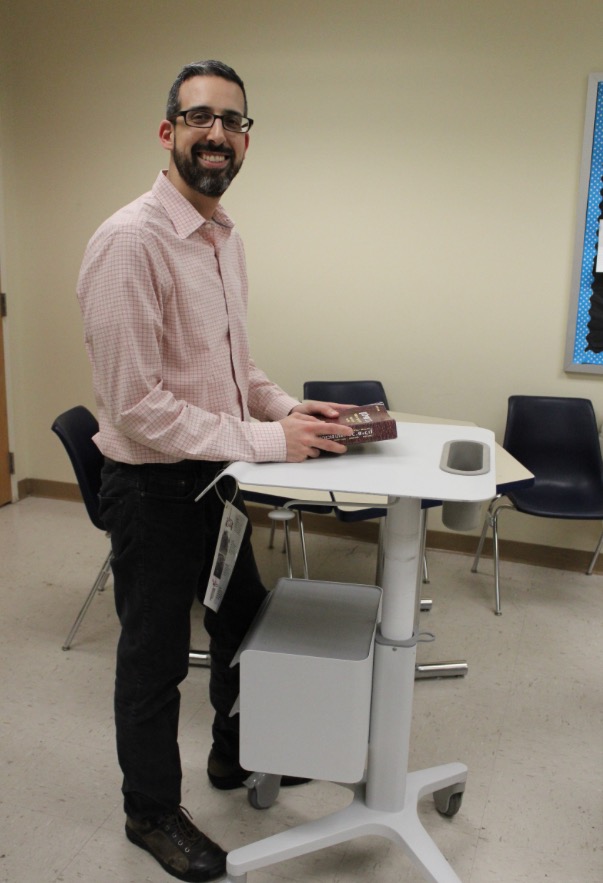Rolling out new furniture
June 1, 2016
As CESJDS reaches its 50th year anniversary, the administration decided to roll out some new furniture for the 2016-2017 school year.
The Upper School has had the same furniture since the campus was created in 2000. Since then, the condition of the chairs and tables has deteriorated, and as the school had been planning to undergo other construction renovations, the administration thought it was a good time to get new furniture.
According to Chief Financial Officer Julie Hoover, not only is the upcoming school year a good time for changes because of other changes in schedule and structure, but the school also has a bigger capital budget to update the furniture. A capital budget is a certain amount of money the school sets aside for renovations in the facility itself to use wherever needed.
There were five test items brought into the school the week of April 11 for the teachers to try out. The entire faculty received an email telling them to select which desks and chairs they liked best for middle-school classrooms, high-school classrooms or both.
According to Hoover, the type of environment that would work best for a high-school class, is not necessarily the type of environment that works best in a middle-school class. Since that is the case, some of the items may only be for middle-school classes, while other pieces of furniture may be just for high-school classes.
The school has worked with many different vendors, including Steelcase, Safco Products and Smith System, to see which furniture works best for other schools. JDS uses this information to create the best learning environment for a modern learning experience.
“What we wanted to do first is see what kind of options everyone liked for a modern classroom,” Hoover said. “Things have changed; it’s the 21st century.”
The administration wants to slowly introduce the new furniture into classrooms in order to ensure a smooth transition. According to Hoover, a slow transition is beneficial because the school does not want to overwhelm students. Additionally, JDS wants to see if the furniture has a positive impact on the students, as the school does not want to replace all of the furniture and later discover that it is having a negative impact on students.
“We will let teachers and students have classes with [the furniture] in this coming school year and then if that works out well, we will get a couple more classrooms full and gradually just replace all the tables and chairs,” Hoover said.
The items tested out included a few table options and chair options. All items are for students, except for one standing desk that is only for teachers.
The two desk options are the AlphaBetter Desk, a standing desk with a swinging foot bar at the bottom, and the Diamond Open Front Desk, similar but smaller than the current trapezoid desks. The Diamond Desk is designed so that it can be used for one student, or it can be configured to different shapes and be used for many students
One of the two chair options that the JDS administration chose to try out is the Noodle Chair, a basic chair that slightly tilts in all directions to help build a stronger core while still being stable and providing back support. The other option is the Node Chair, a spinning chair with a movable desk and storage compartment under the seat.
The Verb Classroom Table, which did not have a sample available, is a standard rectangular desk with attachments that can be used as white board or dividers.
The only option for a teacher desk is the Pocket Mobile Rolling Podium, a standing desk that is easy to move around and has storage space.
Even though the majority of the furniture is for students, mainly teachers got to test them out. After trying the samples out, 30 percent of the staff provided feedback on the options.
“We have to pick something that works well for the majority of classes,” Hoover said.
Staff favorites of these items will be slowly introduced in a few classrooms next year and then at the end of the 2016-2017 school year, the administrators will evaluate how the community reacts to it and take further action.








